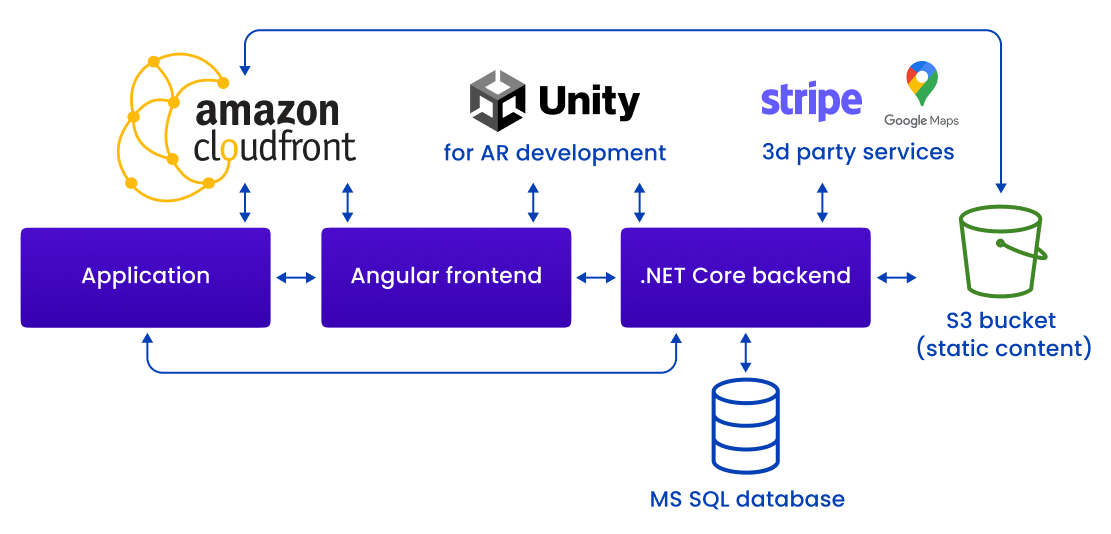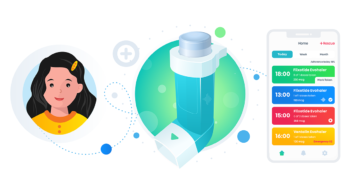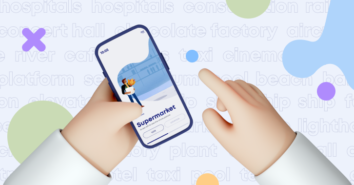As the world recovers from impact of the COVID-19 pandemic, we are witnessing a return in demand for tourism and travel apps. Hindered by a two-year pause, the market is poised to reach a growth rate that is higher than any pre-pandemic metrics. It is expected that it will grow at a rate of 12.2% between 2021 and 2028. The market may also reach USD 14.4 billion by 2028.
This means there’s definitely tourist demand that needs satisfying. A quality city guide tour application brings greater trip flexibility that boosts the demand for real tourism services. That’s why building such an app is a good idea for both startups and existing businesses in the tourism and hospitality industry. As a company with a rich experience in custom application development, including city guide apps, ABCloudz is ready to share its experience with you.
City Guide app: must-have features
In our rich software development practice, we have developed numerous tourism apps that includes the most demanded features. The set of features for such applications is extremely rich and depends on your most ambitious ideas.
We can also outline a few must-have features without which your city tour app won’t be competitive. And we successfully implemented all of them while developing a global tourist app with AR-driven mechanics for an ambitious software startup.

VR/AR integration
VR (virtual reality) and AR (augmented reality) are among the hottest software development trends. If your user needs interactivity, Augmented Reality (AR) integration or VR features may become your city guide’s main selling points. You can allow your users to watch AR objects or tour guides through the lenses of their cameras while visiting specific locations.
Our suggestion is to use Unity, the world’s leading cross-platform framework for real-time 3D development. It allows you to create AR/VR experiences 30% faster with customizable templates and scripts for 3D modeling.
One of Unity’s greatest benefits is that it allows you to write both JavaScript and .NET code, which brings greater flexibility to developers. We recommend using Entity Framework Core to create .NET code. This solution provides simple and customizable camera configuration. It is a perfect feature for apps that allows users to watch AR components through the camera lens.
Besides, Unity is a great option for cross-platform development. The platform allows you to create different builds with platform-specific SDKs (mobile, web, desktop). All these builds roughly include the same code. This benefit helps you save the time and cost required for building separate app versions for different platforms.
For example, you can build a frontend for an AR web app with Unity Web by using Zappar’s Universal AR SDK. In this case, you will use the same code as while building Android or iOS app versions.
However, it is not the only option for building frontend for an AR application. Based on our expertise, building Angular frontend enforced by the A-Frame AR development framework is also a good choice. In this case, you will also get numerous AR development templates that will speed up the development process. Besides, this solution provides for a simple deploy configuration and brings all the benefits of Angular framework, like integration with a large ecosystem of Angular development tools, top-notch security, and excellent performance.

Unique and informative interface
A city guide app must be convenient for the user and provide them with everything they need. So, a user-friendly and consistent UI/UX design is a must. But a convenient map with the most popular tourist destinations and the “launch a tour” option won’t be enough if you want to build a potential market leader.
Consider adding more information on locations or tours in your application. For example:
- Peak visitation times for locations
- Ranking of high-traffic locations
- System of reviews for various locations
- Different tour types for the same location (for example, history-oriented, culinary tours, art trips, etc.)
- Personal cabinet with favorite locations and collections of visited locations
- Photo-sharing feature as a part of the app’s social component.
Google Navigations & location-based content
The content of a good city guide app should be connected to specific locations. That’s why integration with a navigation system is mandatory. The ABCloudz team has integrated the tourist app with Google Maps. There are multiple ready solutions for integrating location-based apps with Google Maps. Besides, Google Maps is known for its precision and offline navigation features, making it a perfect solution for our application.
Offline accessibility
Let your user access city tours without connecting to the Internet. The solution is technically simple. The users can download video guides for particular locationslocations and launch them while visiting these locations offline. AWS Elemental MediaConvert will help you manage the size of these videos so that they won’t be too big for user device storages.

Chat & social networks integrations
The tourism and hospitality industries are well-known for their vibrant community. People like to share their photos, reviews, and emotions from various trips and rely on the reviews of others while making their travel decisions. For this reason, social features may increase your app’s popularity dramatically.
We at ABCloudz have strong expertise in building chat-based mobile solutions. In our experience we use chat integration tools, such as Openfire, to add secondary communication features to your software. We also apply social media integration APIs, as well as our custom practices, to provide seamless integration of city guide apps with the world’s most popular social networks.
A brief note on backend
In most cases, you won’t need to develop an extremely complex backend for your city guide app. A typical monolith architecture with .NET Core backend and Microsoft SQL database will be more than enough. If you want more information about this architectural approach and its benefits, check our article on monolithic architecture and its benefits. Also, the schema below illustrates this approach.

How long will developing a tour guide app take?
This is a very common question in software development. So, to add some “meat” to the article, we provide approximate estimates on developing an MVP for a city guide app with a basic feature set. These numbers will help you plan your time and budget more accurately.



Add around 380 hours required for such tasks as deployment, business analysis, design development, and other tasks (either predictable or unpredictable) to the numbers above, and you’ll get around 1700 app development hours. If there are more extensive feature requirements, developing a tour guide app may take around 2300 hours.
Mind that many of these tasks are completed simultaneously. So, you won’t need to wait 7-10 months to get your app MVP. From our experience, such a project will take around 4-6 months of active development, depending on the application’s complexity and functionality.
Be on top of the tourist software industry with ABCloudz
Spearheading the returning rise of the tourism software industry may be an excellent idea. And a quality tour guide app is your perfect solution. ABCloudz is ready to help you. We will build an excellent city guide with our custom practices and Unity configurations that will help you save time and budget. Be sure to contact us if you have any questions or have ideas to share!
Contact us
Contact ABCloudz today to speak to your new Account Manager.
After a short meeting, you’ll soon have the blueprints for your
app in your hand. The rest, is up to us.

